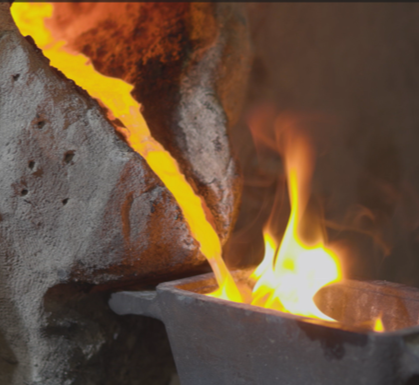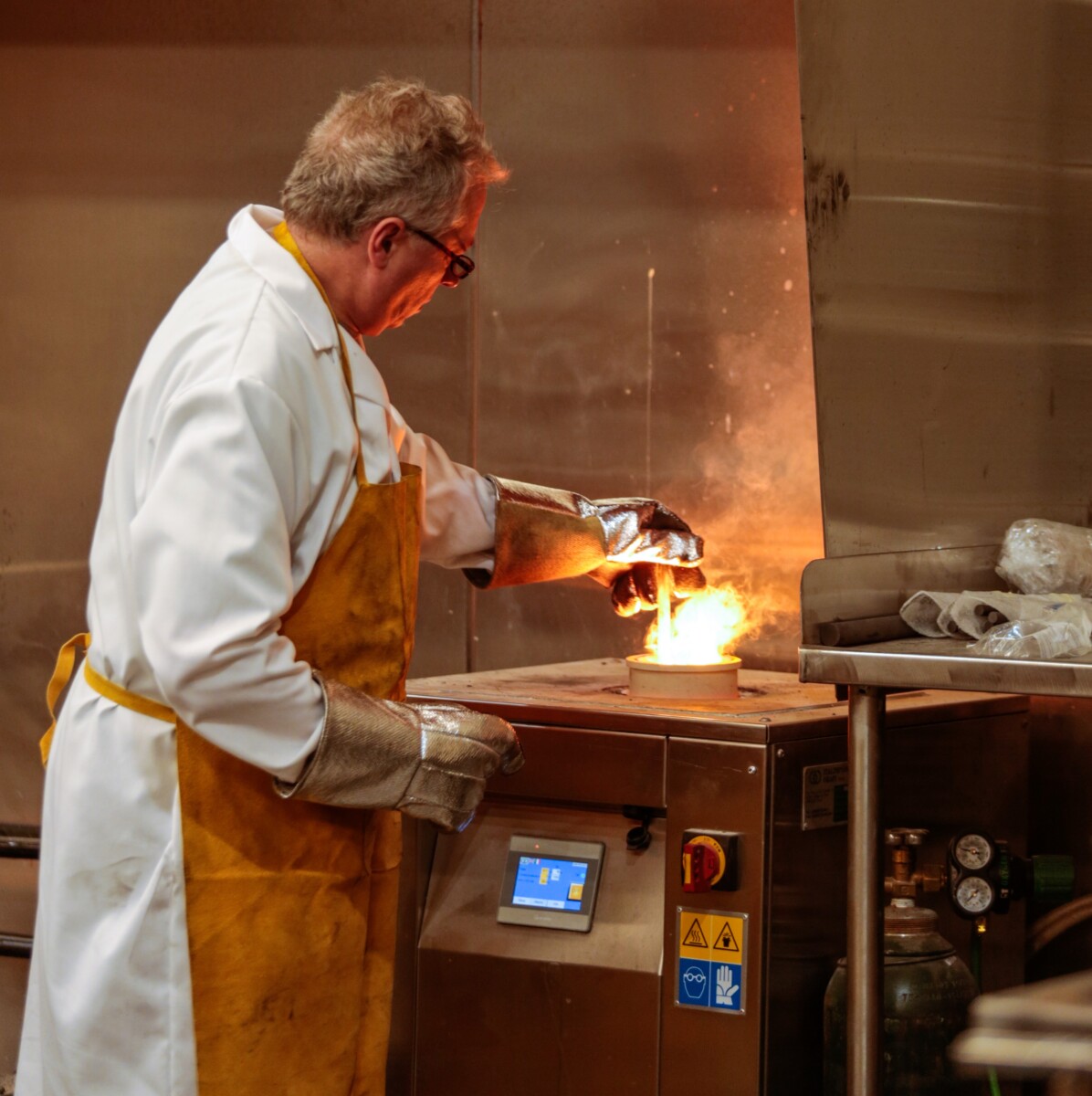How Precious Metal is Refined

Jewelers, pawn stores, and dentists encounter precious metals in broken jewelry, dental alloys or as a by-product of manufacturing and repair of jewelry. Have you ever wondered how precious metal is refined? What happens to a pile of jewelry in refining that allows us to reach a 99.999% level of accuracy in determining the purity of those precious metals?
Precious metal refining typically involves heating the metal to 2300 degrees in a container called a crucible in an induction furnace. Proprietary chemicals are added which allows the removal of undesirable waste (called slag) leaving a homogenous metal bar which can be analyzed with complete accuracy to determine the purity of the metal sent to Noble Metal Refinery.
Methods of Refining

Precious metal refining involves the purification of metals like gold, silver, platinum, and palladium from raw materials such as ores, electronic components, or scrap metal. This specialized procedure typically involves a combination of physical and chemical processes to separate the valuable precious metals from impurities to obtain high-purity products suitable for re-use. Purified precious metal is used in a wide range of applications, including the making of jewelry, electronic and industrial components, health care devices, or for investment purposes. By recycling your scrap and returning it to the market in this way, you’re helping to reduce the need to mine new material.
There are several different processes employed for purifying metals depending on the type of metals being refined. It is critical to utilize the right process to achieve the highest quality results. Some of these processes are:
- Oxidation
- Smelting
- Cupellation
- Chemical Refining
- Electrolysis
- Distillation
How Noble Processes Your Precious Metal Scrap

At Noble Metal Refining, we refine and recycle a wide range of materials containing gold, silver, platinum and palladium for jewelers, pawn shops, dentists, dental labs and other industries. It’s important to choose a refiner known for handling precious metal scrap like yours to ensure proper processing and fair compensation. While the process varies by customer and the types of metal in the lots our customers send us, ours typically involves the following steps:
Receiving and Weighing: We receive your shipment in our securely monitored weigh-in room, and weigh it to determine accurate gross weights. We then call the customer to report the weight, and tag the lot for identification throughout the refining process.
Stone Removal: When processing jewelry scrap, it’s important to choose a refiner with the expertise to preserve and return gemstones from the jewelry scrap received for refining. Noble Metal uses a specialized chemical process called aqua regia to safely remove even the tiniest stones from the jewelry we refine. Stones recovered are returned to the customer along with their final payment.
Separating Precious from Non-Precious Metals: Noble Metal utilizesthermal oxidation to incinerate all organic, non-precious material in the bench sweep lots we receive. The remaining precious metal material is then ball-milled into a fine, crushed powder which is sifted to separate non-ferrous (non-magnetic) metals and magnetic oversize materials.
Melt and Sample: After undergoing the process of oxidation and sifting to separate precious from non-precious metals in each lot, the non-ferrous metallics are smelted in the appropriate induction furnace. A flux is added to remove all impurities from the metal, which is then poured and cooled to form a homogenous metal cone or bar with a sample (pin-core) taken for analysis.
Analysis: This step involves testing the pin-core sample to determine metal purity. Noble utilizes state-of-the-art techniques in our on-site laboratory to quantify the purity of the gold, silver, platinum and palladium in your materials for the highest level of accuracy and accountability. Methods may include acid testing, X-ray fluorescence (XRF), and fire assay to accurately assess the composition of the metals. Once analysis is complete, Noble issues a detailed, easy-to-understand assay report showing payout on all metals refined.
Final Product: The refined metal is formed into precious metal bars, ingots or pellets, which are easier to handle and trade in the market.
Throughout the entire process, Noble adheres to rigorous quality control measures to ensure that the refined metal meets industry standards and our customers’ specifications. Once the refining and analysis is complete, customers receive payment based on the quantity and purity of the metals processed. Our flexible settlement options include payment in 24 Karat gold, gold or silver bullion products, ACH or wire transfer, or by check.
If you’d like to see for yourself how precious metal is refined, take our ONLINE REFINERY TOUR.
Better yet, contact us to SCHEDULE A VISIT to our Indianapolis refining facility and see your precious metals being refined with your own eyes! We’re proud of our transparent process, and would love to show you in person how your precious metal is refined.
